What to Do If Cut On Dog Paw Pad: Comprehensive Guide
Our furry friends use their paws in almost everything they perform, including, playing, running, walking even sleeping. Therefore, any pet owner can feel worried if the paw pad in their paw becomes infected and gives a cut.
By learning about your dog’s paw pads and how the injuries develop, you will be in a better position to care for the Cut On Dog Paw in the best way.
In this ultimate dog paw injuries guide, you will discover everything you should know regarding cuts, potential causes, how to treat them, and how to avoid them.

Understanding Your Dog’s Paws
What are Paw Pads?
Paw pads are the thick, fleshy parts of your dog’s feet carrying out the functions of protection, insulation as well as support. It is composed of connective tissues and adipose tissue and plays the role of providing cushion-like material to prevent any pressure and also providing a barrier against heat or cold.
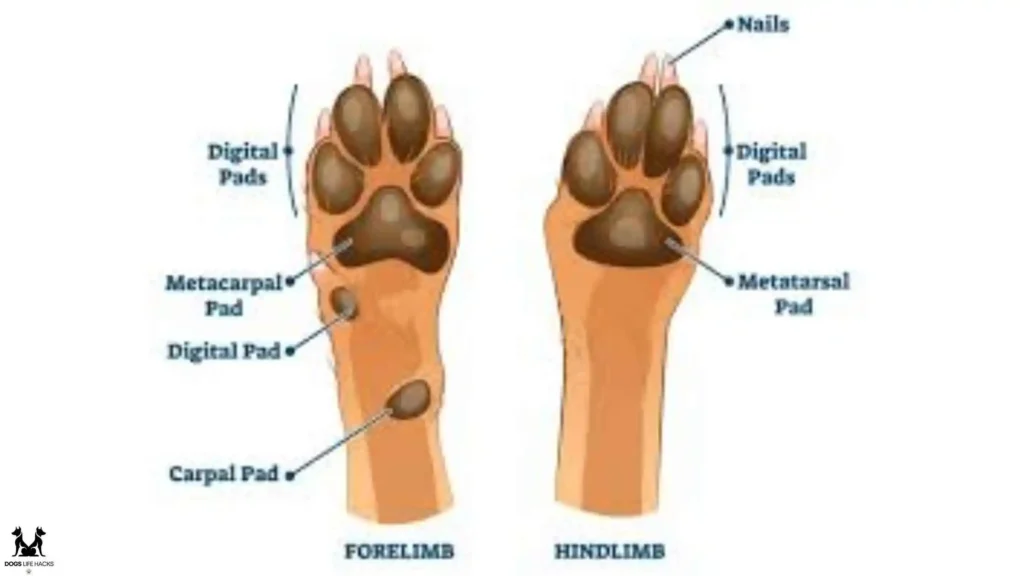
Each paw typically has several pads, the digital pads which are at the end of each toe, the metacarpal pads which are situated right below the toe and the carpal which is found at a higher position compared to the metacarpal pads on the front legs. These pads are very important for your dog, they enable him/her to move and also feel comfortable.
Importance of Caring For Your Dog’s Paws
Taking care of your dog’s paw is a very crucial aspect of the dog’s health. They aid in avoiding any accidents and Cut On Dog Paw, incidences of diseases as well as any kinds of discomfort, which might result from poor inspection and maintenance of the various health structures.
Dirty paws transmit bacteria, which can cause several diseases whereas long nails can cause extreme discomfort to the pet. Further, any injuries on the skin such as cuts and wounds must be treated as soon as possible to reduce healing time and the probability of an infection.
Common Causes of Cut On Dog Paw
How Might My Dog Cut or Hurt Their Paw Pad?
There are several ways through which it causes Cut On Dog Paw. Some of the causes are walking bare feet, sharp objects in the road or ground, and walking on a hot road or floor.
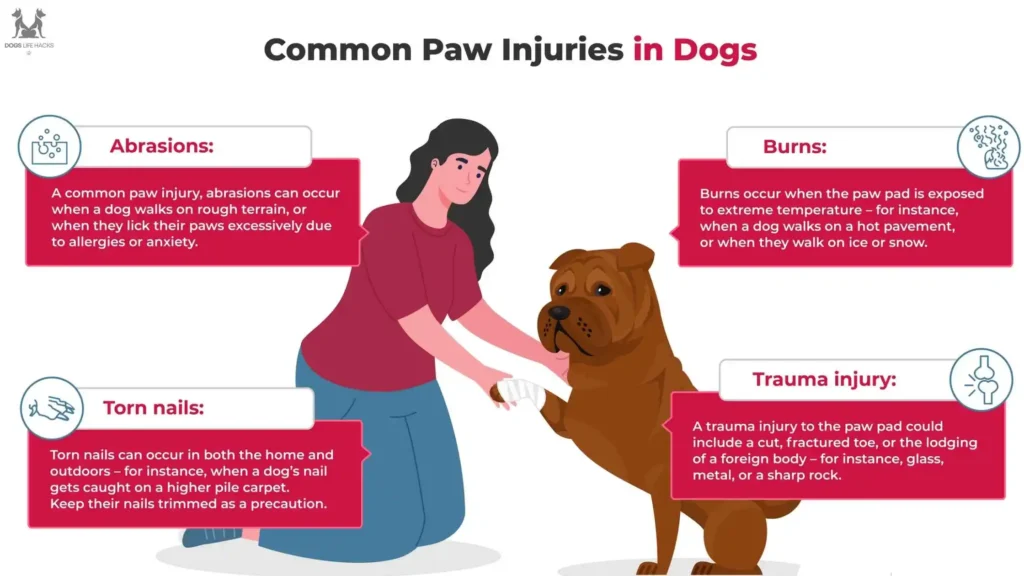
They may also suffer from Cut On Dog Paw from other objects in the rubble heap such as glass or metal. Paw pads can be injured every time the animal comes across rough surfaces including rocks or when it touches an object with its paws. Further, scare incidents such as falling on a hard surface at home like slipping on the floor lead to paw harm.
Different Types of Paw Pad Injuries
Cuts and Scrapes
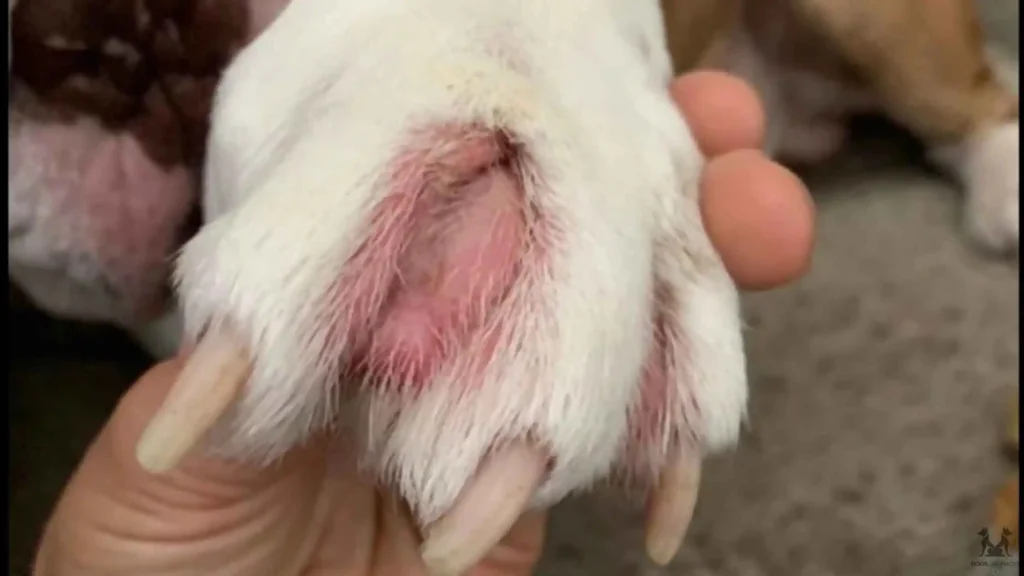
The most frequent kinds of Cut On Dog Paw occur in the form of cuts and scrapes. They can occur when the dog steps on something like a nail or a rough surface leading to a tear. These injuries can range from simple skin scratches to deep cuts that if not well-taken care could cause infection.
Burnt Paw Pads
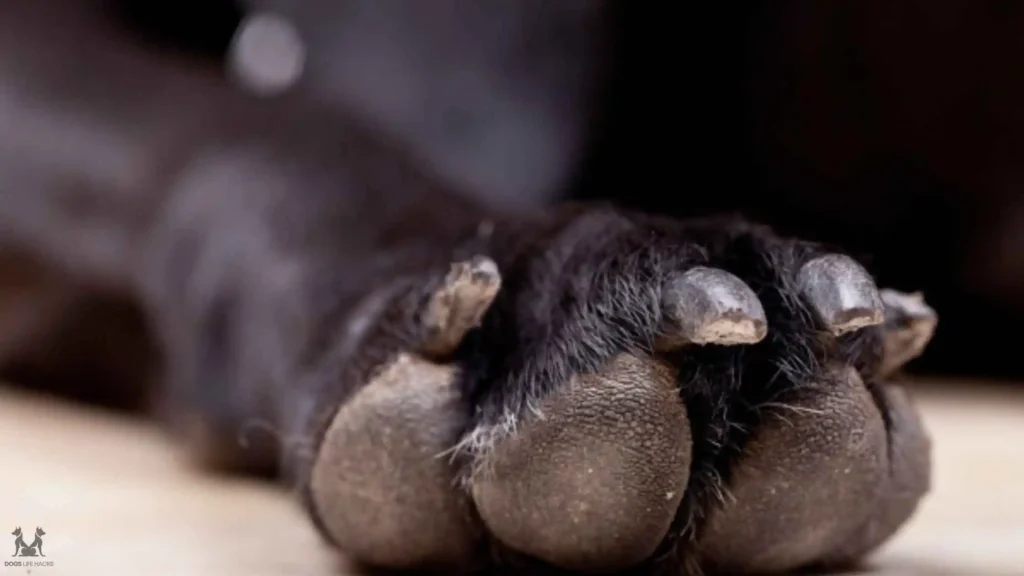
Paw pads are affected by burns that are mainly caused by strolling on hot pavements such as asphalt or sandy beaches. This kind of injury may lead to a lot of discomfort and pain and in extreme cases it may culminate in the inability to have functional paw pads.
Ingrown Toenails
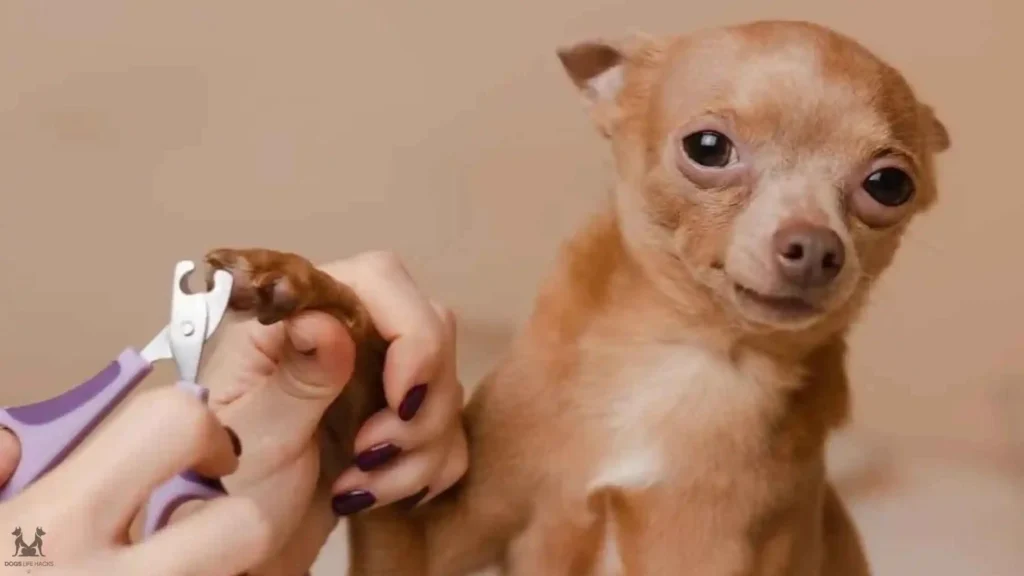
An ingrown nail on a dog’s foot is a condition whereby a nail begins to penetrate the skin, can be painful, and may cause an infection. Even though it is not deep enough to call it a cut, it is painful and causes intense feelings and should be treated well to avoid complications.
Foreign Bodies
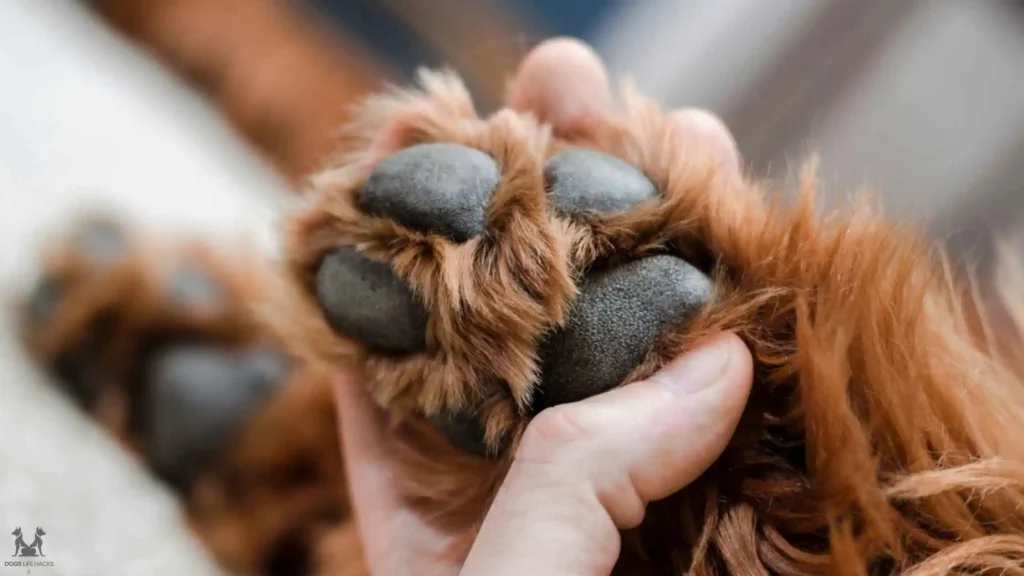
The Cut On Dog Paw can caused by foreign bodies including small stones or splinters, and pieces of glass among others. These can lead to irritation, and pain and of course, if not removed, they can lead to infection.
What to Do if My Dog Has a Cut Paw Pad
Contact Your Vet
In case you find your dog with a Cut On Dog Paw, then one of the first things to do is consult the vet. They can offer medical opinions and inform the client whether a particular injury demands their intervention. It is also important to take the pet to a vet to avoid possible complications which can be an infection or improper healing.
Take a Close Look at the Injured Pad
To be precise, just look at the cut and see what kind of Cut On Dog Paw it is. Look for any objects in the wound, how deep the cut is, and whether the wound is profusely bleeding. If this initial evaluation is positive this would act as the foundation in determining which steps to take in the subsequent treatment plans.
Clean the Cut
Rinse the area around the Cut On Dog Paw with soap and water to free it of impurities. DO NOT scrub the wound, do not use hydrogen peroxide or alcohol since these may cause further irritation on the wound. A warm, sterile, non-alcoholic solution may be used to clean up the area to avoid infection.
Control the Bleeding
Bandage the wound and apply pressure on the injured area to minimize bleeding if any by using a clean cloth. It is also important to note that if the bleeding does not stop, or continues in large amounts, the owner must consult the veterinarian for more help.
Assess the Severity of the Injury
Find out if the Cut On Dog Paw is minor or major. Superficial skin injuries might be easily managed on your own while severe ones may need a doctor or stitches. Certain red signals should alert you in case you experience a severe injury and these are bleeding a lot, a lot of pain, and/or signs of infection.
Bandage the Wound
If the cut is small, you can cover it to avoid further harm and ensure it does not get infected. Using the proper dressing, one should cover it with a non-stick, sterile bandage and it should be done loosely because it does not allow circulation of the blood. Clean the wound area daily and replace the dressing frequently to prevent infection if any develops.
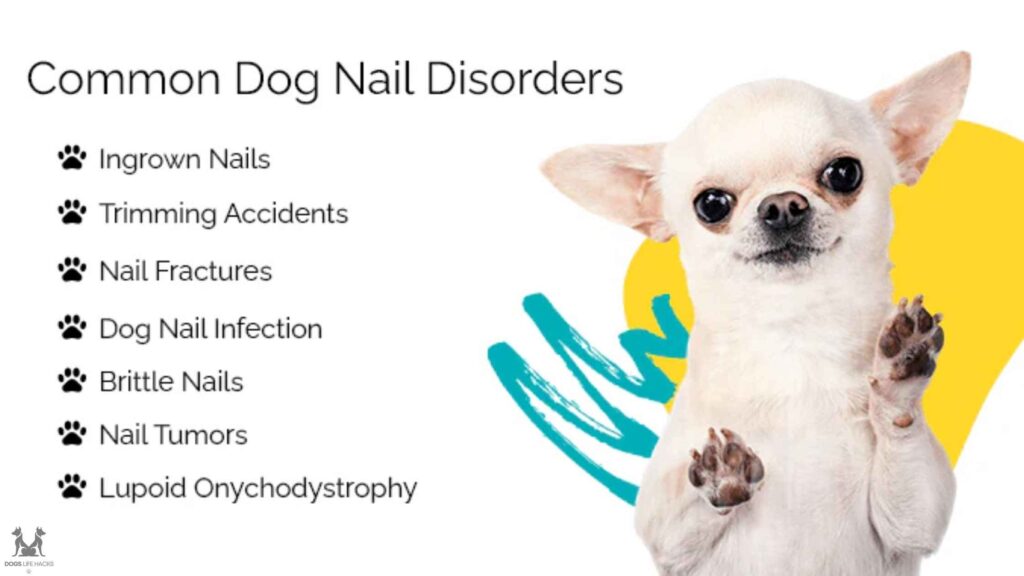
How to Treat a Paw Injury at Home
Evaluating the Injury
Always assess the severity of the injury before providing a home remedy to a dog’s paw. Whether the injury is small, or if further professional attention from a veterinarian is required. Cuts and abrasions are among the part injuries that can easily be treated from home with first aid.
Removing Foreign Objects
If there is an object that is foreign and stuck in the paw pad then gently using a clean pair of tweezers or pinching it out should suffice. Do not submerge it further into the wound lest you hurt the patient more. If the removal is not easy or if it is painful, it is advisable to consult the veterinarian.
Applying Pressure to Stop Bleeding
Wipe the wound with a clean cloth or gauze and apply some slight pressure to the cut to stop it from bleeding. Keep the pressure for a few minutes until the bleeding subsides to some extent. It is very important that bleeding should stop after some minutes, but if bleeding does not stop consult your vet.
When Home Remedies Are Enough
In the case of small wounds such as scratches, simple first aid measures such as washing the affected area, applying an adhesive bandage, and making sure the dog does not over-exert itself can be effective. Keep an eye on the injury to see that it is healing properly and to look for signs of infection such as redness, swelling, or pus.
When to Visit a Vet
Deep Cuts and Persistent Bleeding
It is necessary to seek a vet if the cut is deep, does not stop bleeding, or has some symptoms of infection. Severe lacerations might need suturing and if the bleeding continues then it is something serious.
When Should I Take My Dog to the Vet?
There are signs that your dog needs to be taken to the vet, therefore, take your dog to the vet if the injury is serious, if there is bleeding, or if you observe signs such as increased size, redness, or discharge from the wound. Besides, if your dog is still in too much pain, or you are observing discomfort signs, go for professional help.
Signs That My Dog Needs Veterinary Care
A time when a dog may need the attention of the veterinarian includes when the dog is severely painful, has signs of infection, or if the wound has not begun healing with the basic care given at home. It is therefore important to consult your vet to make sure the right treatment is given and the right recovery made.
How Long Does It Take for a Paw Pad to Heal?
Factors That Affect Healing Time
Doggie’s paw pad healing period may take several days, weeks, or even months, depending on the intensity of the cut, the dog’s general condition, and the treatment applied.
Shallow injuries often heal within a couple of weeks while the deep ones may take longer time. Other elements for example infections, the level of physical activity, and age also determine the period of the process of healing.
Ongoing Care During Recovery
After it is healed, the wound has to be cleaned and observed for any signs of complications in the process of recovery. Your dog should not be allowed to lick or chew the area; this can be solved by using an Elizabethan collar. Pestigeuezee also advises you to follow up with your vet for further treatment and follow-up services.
Should I Let My Dog Lick His Cut Paw?
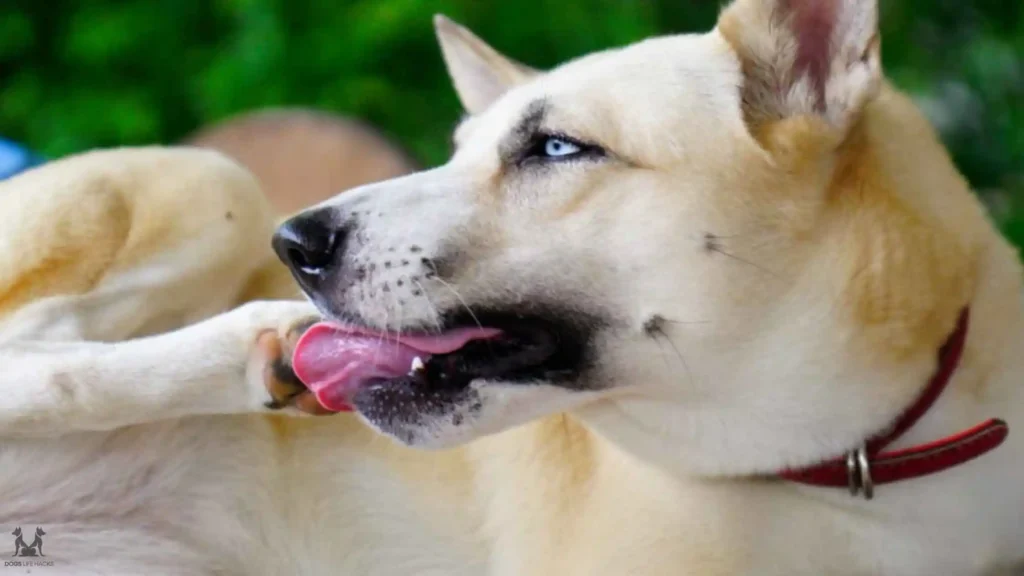
If you let your dog lick its paw, it will be worse since bacteria is introduced and the healing is slowed down. For the most part, it is advisable to avoid licking in the first place by using a protective bandage or even an Elizabethan collar.
If this continues, you should seek another remedy from your veterinarian to avoid further complications.
Preventing Future Paw Pad Injuries
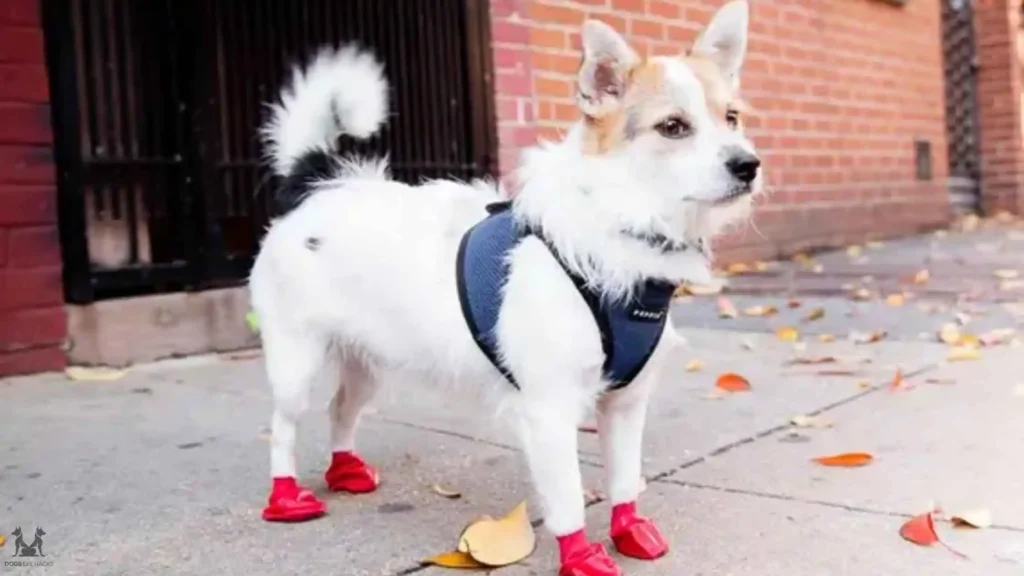
Protective Footwear for Dogs
Dog boots are useful in protecting your pet’s paws to avoid injury. These are especially useful when strolling on hot pavements, terrains that are rigorous on the feet, or during the colder seasons. Select the boots that are comfortable to wear and have enough protective features.
Regular Paw Care and Maintenance
It is important always to take paw care lessons so that there can be no injuries especially on the feet region. This involves CHECKING your dogs’ paws OFTEN, clipping nails, and MAKING SURE the paw pads are CLEAN and not damaged by rocks and sticks.
Risk of what, could you tell me? Regular grooming helps to maintain the paws in the very best of shape and thus the occurrence of the risk is prevented.
Common Mistakes Dog Owners Make with Paw Injuries
Ignoring Minor Cuts
Minor injuries on the paw of your dog can be aggressively treated and may cause harm to your dog due to infection or worsened injury. Injuries as simple as cuts should also be cleaned and followed up to make sure that they do not develop complications.
Using Incorrect Cleaning Methods
Raw surfaces of the wound should not be exposed to materials containing strong chemicals or cleaned using the wrong methods as that may cause the wound to take longer to heal. Only use virus-free and non-toxic cleaners with pets and speak with the veterinarian for proper and safe wound treatment.
Final Thoughts
It is important to understand and treat the Cut On Dog Paw on your dog’s paw pad area for the well-being of your dog. It is therefore important to understand how to properly handle and take care of them and when to consult the veterinarian’s services so that your pet can be practically over and cushioned.
Daily clean-up, trimming of hair, and taking precautions will also help minimize future occurrences of an injury. Bear in mind that timely and proper treatment is important to your dog’s health.
Frequently Asked Questions
How do you treat a cut on a dog’s paw?
Rinse and/or rub a small squirt of liquid hand soap or dish soap into your dog’s paw to kill bacteria. Another good way to clean a cut on your dog’s pad is to rinse the wound with an antiseptic such as the diluted chlorhexidine solution.
Will a dog’s paw heal on its own?
He told them that paw pads take longer to heal once they have been injured than other parts of the body. A minor scratch may take several weeks or even months to heal because dogs keep on placing their weight on their paws exposing any healing skin to the elements which can reopen the wound.
Can you put Neosporin on a dog cut?
Neosporin is safe for dogs but if ingested it can affect their health in ways such as making them sick. It is also possible to apply ointments for wound treatment and medicated wipes commonly used in cleaning the body of a pet to minimize the chances of infection. If your dog’s wound continues to ooze with blood or is deep enough to require a bandaging, better call a vet.
How long does it take for a dog’s cut paw to heal?
Minor injuries such as cuts and abrasions require adequate care and most of them take about a week to fourteen days to heal. You are more seriously injured if the takes much time, therefore it may take anything from a few hours to several weeks at most. To prevent any reinjury, your dog needs to be kept as inactive as possible during the puncture’s healing process, always consult your veterinarian.
What does a sprained paw look like on a dog?
Reddened joints. Aversion to place pressure on paw or limb. Swollen joints. Swollen paws.
Related Articles
